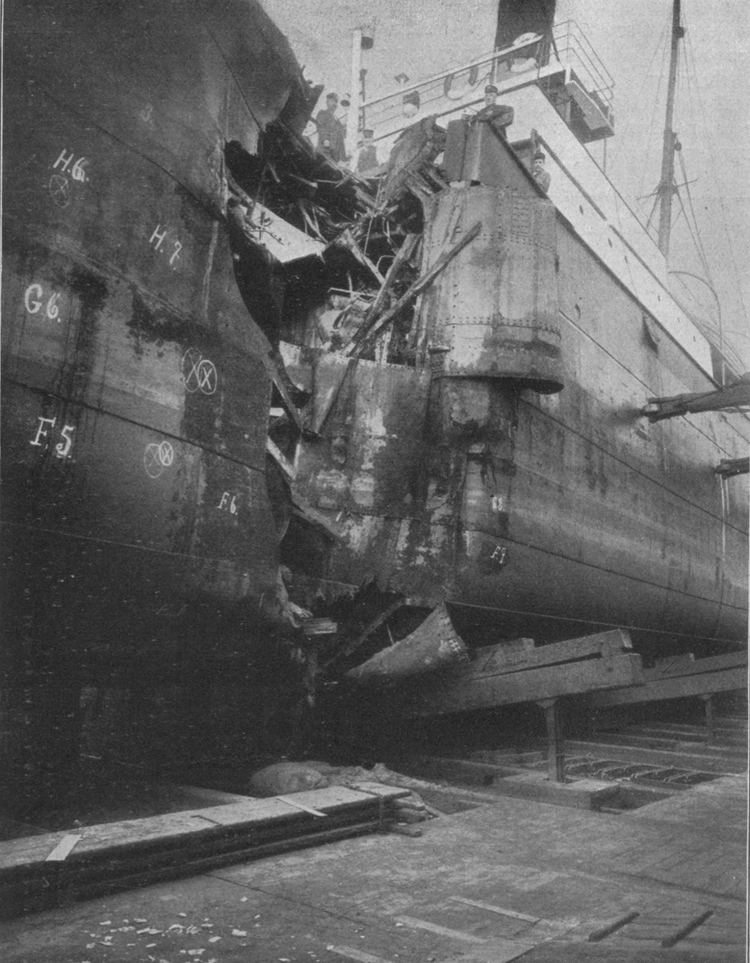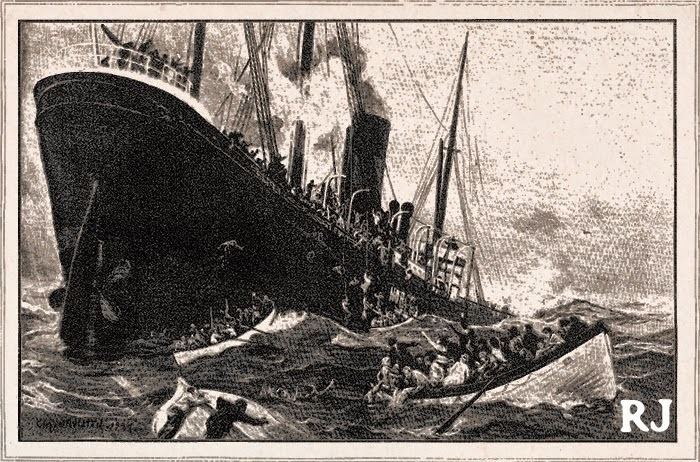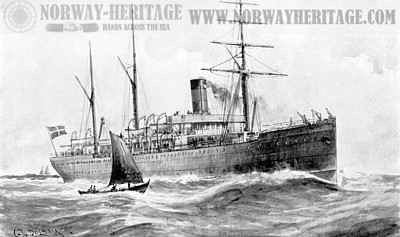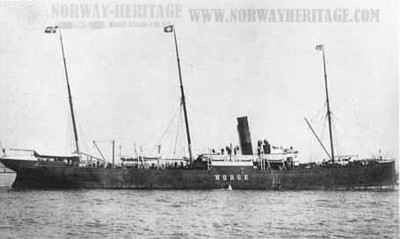Yard number 252 Launched 1881 | Name Norge | |
 | ||
Owner Theodore C. Engels & Co Owner 1889-1898 A/S Dampskibs-selskabet Thingvalla1898-1904 Det Forenede Dampskibs-Selskab (DFDS) Builder Alexander Stephen and Sons | ||
SS Norge was a Danish passenger liner sailing from Copenhagen, Kristiania and Kristiansand to New York, mainly with emigrants, which sank off Rockall in 1904. It was the biggest civilian maritime disaster in the Atlantic Ocean until the sinking of the RMS Titanic eight years later, and is still the largest loss of life from a Danish merchant ship.

She was built in 1881 by Alexander Stephen and Sons of Linthouse, Glasgow, for the Belgian company Theodore C. Engels & Co of Antwerp; her original name was Pieter de Coninck. The ship was 3,359 GRT and 3,700 tonnes deadweight (DWT), and the 1,400-horsepower (1.0 MW) engine gave a speed of 10 knots (19 km/h; 12 mph). She could carry a maximum of 800 passengers.

In 1889, she was sold to a Danish company, A/S Dampskibs-selskabet Thingvalla, for its Stettin-Copenhagen-Kristiania-Kristiansand-New York service and renamed Norge. On 20 August 1898, Norge collided with the French fishing brigantine La Coquette in a fog. La Coquette broke in two and sank, and 16 of the 25 crew aboard drowned. Following financial difficulties, Thingvalla was purchased in 1898 by Det Forenede Dampskibs-Selskab (DFDS), Copenhagen, which served the route as "Scandinavia-America Line". By then, the capacity of Norge was 50 1st class, 150 2nd class and 900 3rd class passengers.

In June 1904, the Norge was heading for New York from Copenhagen, under the command of Captain Gundal. She was carrying a crew of 71, 9 second-class passengers, and 694 steerage passengers. Among the steerage passengers, there were 296 Norwegians, 236 Russians, 79 Danes, 68 Swedes, and 15 Finns. Half of the steerage passengers had prepaid tickets, paid for by relatives living in the United States.

On 28 June, Norge ran aground on Hasselwood Rock, Helen's Reef, close to Rockall, in foggy weather. She was reversed off the rock after a few minutes, but the collision had ripped holes in the ship's hull, and water began pouring into the hold. The crew of the Norge began lowering the lifeboats, but the first two lowered were destroyed by waves. Only three boats were successfully launched out of the eight on board. Many passengers jumped overboard, only to drown or be pulled under by the suction caused by the ship as it swiftly sank. The Norge sank twelve minutes after the collision. Captain Gundal stayed with the ship as it sank, but managed to swim to one of the lifeboats.

According to author Per Kristian Sebak's comprehensive account, over 635 people died during the sinking, among them 225 Norwegians. The first survivors to be rescued, a group of 26, were found by the Grimsby trawler Sylvia. 32 more were picked up by the British steamer Cervonax, and 70, including Captain Gundal, by the German steamer Energie. Some of the 160 survivors spent up to eight days in open lifeboats before rescue. Several more people lost their lives in the days that followed rescue, as a result of their exposure to the elements and swallowing salt water.
Among the survivors was the poet Herman Wildenvey.
The disaster remains the worst in Danish maritime history. The wreck of Norge was located off Rockall in July 2003.
